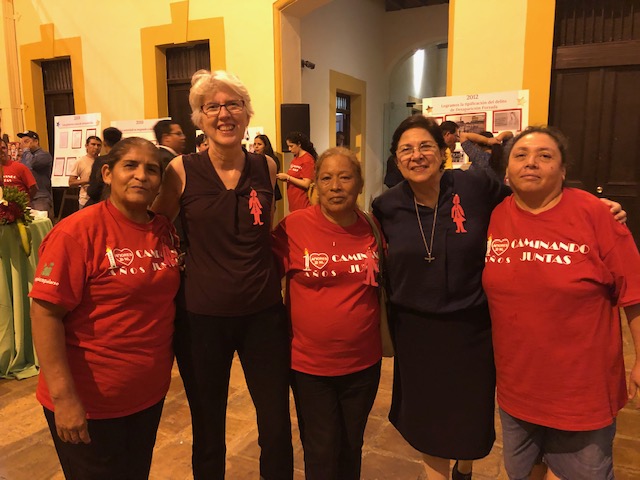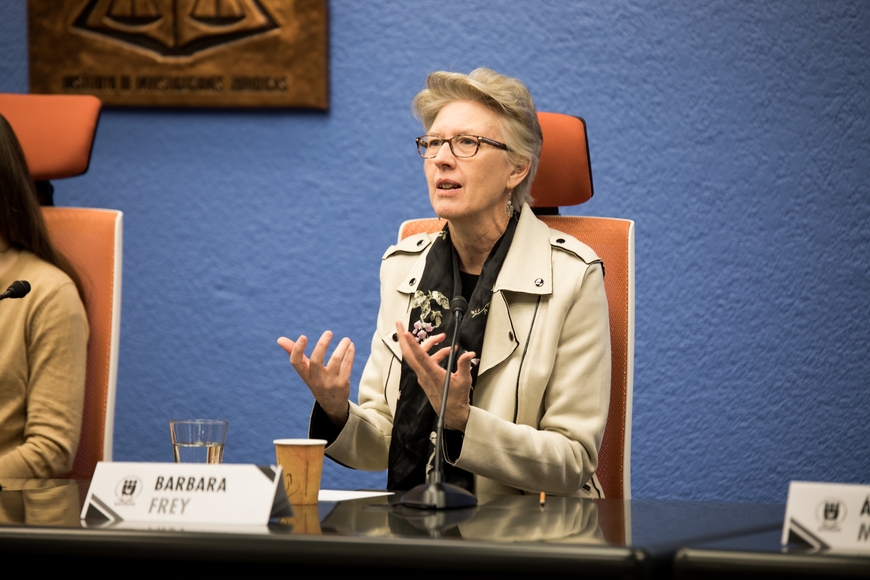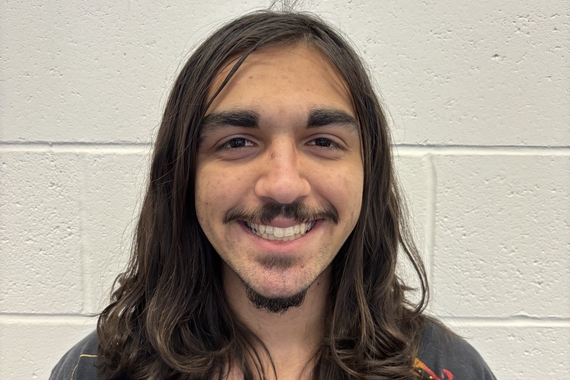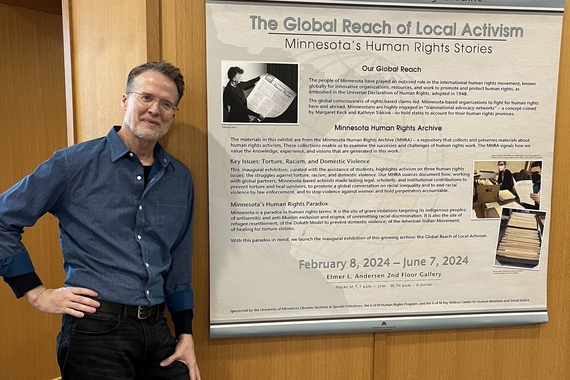Enforced Disappearances in Mexico: A Firsthand View
I am honored to have received a 2019 Fulbright-Garcia Robles fellowship to spend fall semester 2019 in Mexico City, as a visiting researcher at the Institute for Juridical Investigation at UNAM (the National University of Mexico). I am carrying out an investigation to examine the legal, social and human rights impacts of institutional responses to the problem of enforced disappearances in Mexico. The Fulbright award complements the research grant I received through the University of Minnesota’s Human Rights Initiative, to document human rights violations in Mexico.
With my colleagues, Karina Ansolabehere of UNAM and FLACSO-Mexico, and Leigh Payne of Oxford University, I have been investigating the problem of disappearances for the past four years, through a research network called the Observatory on Disappearances and Impunity in Mexico. Through this academic collaboration, involving teams of student researchers at our academic institutions, we are analyzing available sources of information, such as press articles and legal files, to understand the brutal wave of disappearances in Mexico – acknowledged by the government to be more than 40,000 in the past decade.
During my stay, I have been monitoring the implementation of an important law adopted by the Mexican Government in 2017, entitled the General Law on Forced Disappearance and Disappearance Committed by Private Persons. This Law on Disappearances established several new institutional mechanisms to carry out searches for disappeared persons, criminal investigations, and prosecutions. The families of the disappeared demanded the law and are now working hard to ensure that it will establish the truth and lead to the prosecution of those responsible for the crimes.
In order to track the impacts of this new Law, I have been attending lots of meetings and conferences and interviewing people with direct knowledge of its implementation. Since the Law requires each one of the 32 Mexican states to establish their own commissions to search for the disappeared and prosecutors to investigate the crimes, I have been traveling to different states to observe the work of those new mechanisms. Thus far, I have visited the states of Nuevo Leon and Coahuila, two places we have researched through the Observatory. It was amazing to meet the family groups in these two states who have worked so diligently to search for their loved ones and to demand investigations into their disappearances.

In Nuevo Leon, I represented the Observatory at a commemoration of the 10th anniversary of the founding of the family group, known as AMORES (“loves”) for its Spanish acronym. I heard the moving testimony of wives and mothers who, out of necessity, have evolved into detectives, lobbyists, legislative experts and public speakers. You cannot hear these testimonies without being moved by the courage and solidarity of these family members. A decade ago--despite the public perception that those who were disappeared “must have done something”—these families refused to give up their search for the truth or the human dignity of their loved ones. Their defiance, borne from love (AMOR), has changed the public’s perception little by little.
In Coahuila, Professor Ansolabehere and I met with families associated with two organizations, the Fray Juan de Larios human rights center (located in the Catholic Archdiocese) and FUNDEC (Forces United for our Disappeared in Coahuila). We presented them with findings from our research, including what the data tells us regarding: who did what to whom. Coahuila will be the site of a regional center on forensic identification, which will take on the daunting task of scientific identification of human remains from several northern states in Mexico.

I have also been pleased to participate in various conferences, and to hold the Human Rights Program banner high here. In September, I spoke on a panel at UNAM about the significance of the U.N. Human Rights Committee’s decision, Tellez Padilla v. Mexico (holding the government accountable for enforced disappearance based on it untimely and ineffective investigation). In October, I moderated a panel at El Colegio de Mexico on “Disappearances, feminicide and forensic science,” that was part of a Colloquium for Young Researchers.
In December, the Observatory will hold an international conference at the Institute on Juridical Investigation at UNAM on strategies for the documentation, analysis and public education of crimes of enforced disappearance in Mexico. I will be pleased to present findings from my research at the conference and to showcase as well the talents of our University of Minnesota students, such as Hunter Johnson and Maria Ignacia Terra.
I am grateful for the support of the University of Minnesota, the Institute for Global Studies, the Human Rights Initiative and the Fulbright Scholars Program in this amazing semester abroad.




